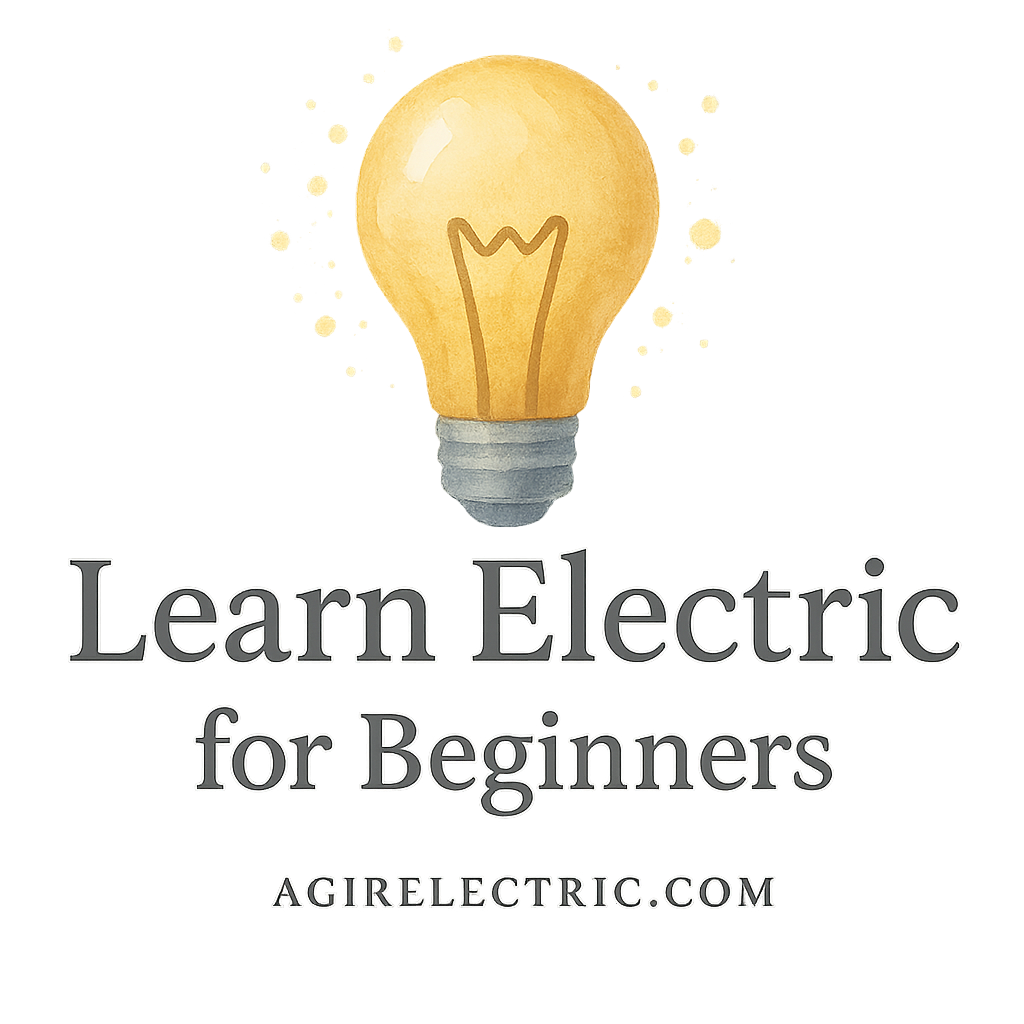Introduction to Electric Circuits
Ever flipped a switch and watched a light flick on like magic? That’s the power of electric circuits at work. Whether you’re a total beginner or someone who just wants to DIY a few home projects, understanding how different electric circuits operate is a total game-changer.
If you’re just getting started with electricity, you might want to check out our Electric Basics for Beginners guide. It’s packed with practical insights tailored just for you.
What is an Electric Circuit?
An electric circuit is simply a closed path that allows electric current to flow. It’s like a loop — if the loop is complete, electricity flows. If not, nothing happens.
Imagine water flowing through a hose. Electricity behaves in a similar way. A circuit is the “hose,” and the electricity is the “water.” The loop must be unbroken for it to work.
Why Understanding Circuits Matters
If you’re thinking of tackling Home Electric Projects or even just want to fix a faulty light switch, you need to know how these circuits work. Trust me, it’ll save you from future headaches and safety hazards.
And speaking of hazards — you might want to peek at our Electric Safety Precautions before diving in.
1. Series Circuit
How a Series Circuit Works
In a series circuit, components are connected end-to-end. That means the electric current flows through each component one after the other.
Let’s say you’ve got three light bulbs in a series. If one burns out? Boom — the whole line goes dark. That’s because the current can’t complete the loop.
Real-Life Applications of Series Circuits
- Flashlights
- Holiday string lights
- Old-school Christmas decorations
While series circuits are simple and cost-effective, they’re not always practical for larger systems.
2. Parallel Circuit
How a Parallel Circuit Works
Unlike series circuits, parallel circuits have multiple paths for electricity to flow. Each component has its own loop.
So if one light bulb in your home blows out, the others stay on. That’s because each bulb is on its own little loop of current.
Real-Life Applications of Parallel Circuits
- Residential lighting systems
- Home appliances
- Power strips
Most modern home setups use parallel circuits for this very reason — reliability.
You can find more DIY-friendly knowledge in our Troubleshooting Electric Issues section — super handy when things go wrong.
3. Open Circuit
How an Open Circuit Works
An open circuit is one where the path is broken. It’s like turning off a light switch. The switch breaks the loop, stopping the current.
Sometimes it’s intentional. Other times, it’s a problem — like a cut wire or a blown fuse.
Signs You Have an Open Circuit
- Light switches not responding
- Dead outlets
- Flickering appliances
Learning to Diagnose Electrical Problems early can save you tons of stress later.

4. Closed Circuit
How a Closed Circuit Works
A closed circuit is what makes everything go. The loop is complete, allowing electricity to move freely from the power source, through the wires, and back again.
Common Uses for Closed Circuits
- Everyday electronics
- Home lighting systems
- Circuit boards
Want to Learn Electric systems like a pro? Closed circuits are the foundation of it all.
5. Short Circuit
How a Short Circuit Occurs
A short circuit happens when electricity finds a shortcut, bypassing the regular path. This can lead to a dangerous surge of current.
Picture a detour sign leading traffic into a dead-end — it’s not just confusing, it’s hazardous.
Why Short Circuits Are Dangerous
- Fire risk
- Damaged appliances
- Shock hazards
If you’re doing any sort of home wiring, make sure to follow best practices. We’ve detailed the key Mistakes to Avoid so you can stay safe.
Choosing the Right Circuit for DIY Projects
Whether you’re rewiring a lamp or installing a ceiling fan, choosing the right circuit type is crucial. Series circuits are good for low-power, simple setups. For anything complex or critical — go parallel.
Our guide on Home Improvement DIY has more step-by-step walkthroughs.
Tools You’ll Need for Circuit Work
Before you get started, gear up! Here’s a list of must-haves:
- Multimeter (Check this Multimeter Tag)
- Wire strippers
- Insulated screwdrivers
- Circuit tester
For a complete toolkit, explore our Electric Tools & Equipment recommendations.
Common Mistakes to Avoid When Working with Circuits
- Not turning off the power
- Mislabeling wires
- Skipping testing
- Overloading circuits
Check out this Fix-it Tag for troubleshooting tips.
Safety Tips Before You Start
Electricity is no joke. Here are a few safety reminders:
- Always shut off the circuit breaker
- Use insulated tools
- Wear rubber-soled shoes
- Double-check your connections
Our Safety Tag has a full safety checklist — don’t skip it!
Final Thoughts
Understanding the five main types of electric circuits — series, parallel, open, closed, and short circuits — isn’t just for engineers. It’s knowledge every homeowner and DIY-er should have.
When you know how electricity flows (and when it doesn’t), you’re not just fixing things — you’re mastering them. Stay curious, stay safe, and always keep learning.
Explore more on our blog at Agir Electric and dive into topics that demystify the world of DIY electrical work.
FAQs
1. What’s the difference between a series and a parallel circuit?
In a series circuit, current flows in one loop. In a parallel circuit, it flows through multiple paths. Parallel is more reliable.
2. Can I mix series and parallel circuits in my home?
Yes, hybrid circuits exist — but unless you’re an expert, it’s best to consult an electrician.
3. What causes a short circuit?
A wire touching another wire it shouldn’t, faulty appliances, or water exposure can all cause short circuits.
4. How do I test a circuit at home?
Use a Multimeter to check voltage, resistance, or continuity.
5. What tools are essential for circuit troubleshooting?
A multimeter, circuit tester, wire stripper, and insulated screwdriver are your best friends.
6. Are open circuits always bad?
Not always. Sometimes they’re intentional — like flipping a switch. But accidental ones need fixing.
7. Where can I learn more about electric circuit basics?
Right here! We also recommend exploring DIY, Electric Terms, and Measurement Tools.


